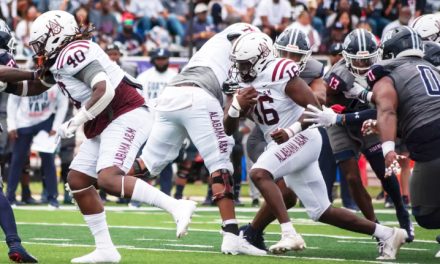By Michael Pugh
After years of interest rates hovering at or near zero, the Federal Reserve continued its long-telegraphed move in May to raise interest rates by 50 basis points and four times thereafter by 75 basis points through November. These moves resulted in an increase of nearly 4.00 basis points.
With more hikes likely on the way, the shift in monetary policy was needed to combat the highest inflation in decades with the Consumer Price Index rising to 9.1 percent in June and slowed to 2.8 percent in September. Unfortunately for small businesses, inflation has become their number one concern according to a recent survey conducted by the U.S. Chamber of Commerce. This in effect has placed downward pressure on margins due to higher costs for labor, materials, inventory, and fuel.
Community banks will need to play a more significant role in helping small businesses navigate these unprecedented times. As of the most recent data from the FDIC, there are approximately 143 Minority Depository Institutions (MDIs) across the United States with $325 billion in assets under management. Out of these banking institutions, 35 are also designated as U.S. Treasury Community Development Financial Institutions (CDFIs).
Specific to New York, there are 112 community banks that specialize in providing access to capital, flexible credit, and strategic investments in areas that are disproportionately underserved and unbanked. This is being addressed by MDI’s and CDFIs like Carver Federal Savings Bank, headquartered in Harlem, N.Y., by reinvesting 80 cents of every dollar in deposits back into local communities fueling small business growth, job creation and economic development.
Main Street remains busy with small businesses accounting for 44 percent of US economic activity. Creators of goods and services ranging from fashion to fintech are continuously innovating and receiving purchase orders, many of which are on a cash basis. This issue of a rising rate environment will only exacerbate access to capital needs and the effects of the wealth gap in our most vulnerable communities.
This phenomenon became crystal clear during the early stages of the pandemic, when many small businesses could not get the attention of large lending institutions for their PPP Loans.
Data shows that community banks made 60 percent of all PPP loans – including 72 percent of PPP loans to minority businesses. These loans served households with incomes of $40,000 or less, uplifting vulnerable populations facing long-term unemployment rates near 10 percent.
Community-based banks became a lifeline for those in need and those who had the determination to succeed.
Prior to the pandemic, underserved communities faced significant hurdles related to systemic inequalities involving wealth gaps, weak credit histories, or difficult standards to meet to qualify for capital. A recent study showed that exclusionary practices contributed to almost one quarter of U.S. adults—mainly young, under-capitalized women of color—being unbanked or underbanked. The net effect results in depressed productivity as business leaders of tomorrow are being turned down today for construction loans or operational financing.
To level the playing field, CDFIs were created in 1994 so disadvantaged populations can compete on a stronger footing. To date, CDFIs have offered $1.1 billion in low-interest loans or grants to provide a pathway to new business opportunities in distressed communities. Moreover, they take the extra step by helping businesses receive no-cost professional services in accounting, marketing, job training, and strategic planning for continuous improvement.
At Carver Federal Savings Bank, we have seen firsthand how targeted, principled community banking programs can impact America’s most underserved communities. During the pandemic, for example, Carver originated $200 million in loans to local entrepreneurs and real-estate owners, helping preserve 5,000 jobs.
Support for the Fed’s measured and timely response to addressing inflation and curtailing a recession must be matched on the local level as community institutions work to tackle macro problems that have long existed and uplift those women- and minority-owned small businesses that have historically been left behind. Public and private sector partnerships, and large financial institutions will want to continue reimagining ways to work with CDFIs in the interest of supporting the small business community that remains the core engine of our Nation’s growth.
The role of community banks and CDFIs has never been more important in helping small businesses and entrepreneurs gain certainty with access to capital they need to recover, restart, and thrive for years to come.
Michael Pugh is the president and CEO of Carver Federal Savings Bank. Headquartered in Harlem, Carver is one of the largest African-American managed banks in the United States, serving minority communities whose residents, businesses, and institutions had limited access to mainstream financial services since 1948. The U.S. Treasury Department has designated Carver as a Community Development Financial Institution (CDFI) because of its community-focused banking services and dedication to its local community’s economic viability and revitalization. Carver is the largest African- and Caribbean-American managed bank in the United States.
The bank recently expanded its online presence to include consumer checking and savings accounts in nine states, from Massachusetts to Virginia and Washington, D.C.
For further information, please visit the Company’s website at www.carverbank.com. Be sure to connect with Carver on Facebook, LinkedIn, and Twitter.
The opinions on this page are those of the writers and not necessarily those of the AFRO. Send letters to The Afro-American • 145 W. Ostend Street Ste 600, Office #536, Baltimore, MD 21230 or fax to 1-877-570-9297 or e-mail to editor@afro.com
Help us Continue to tell OUR Story and join the AFRO family as a member –subscribers are now members! Join here!
The post Rising rates raise the stakes for small businesses, reinforcing the benefits of community banking appeared first on AFRO American Newspapers .











